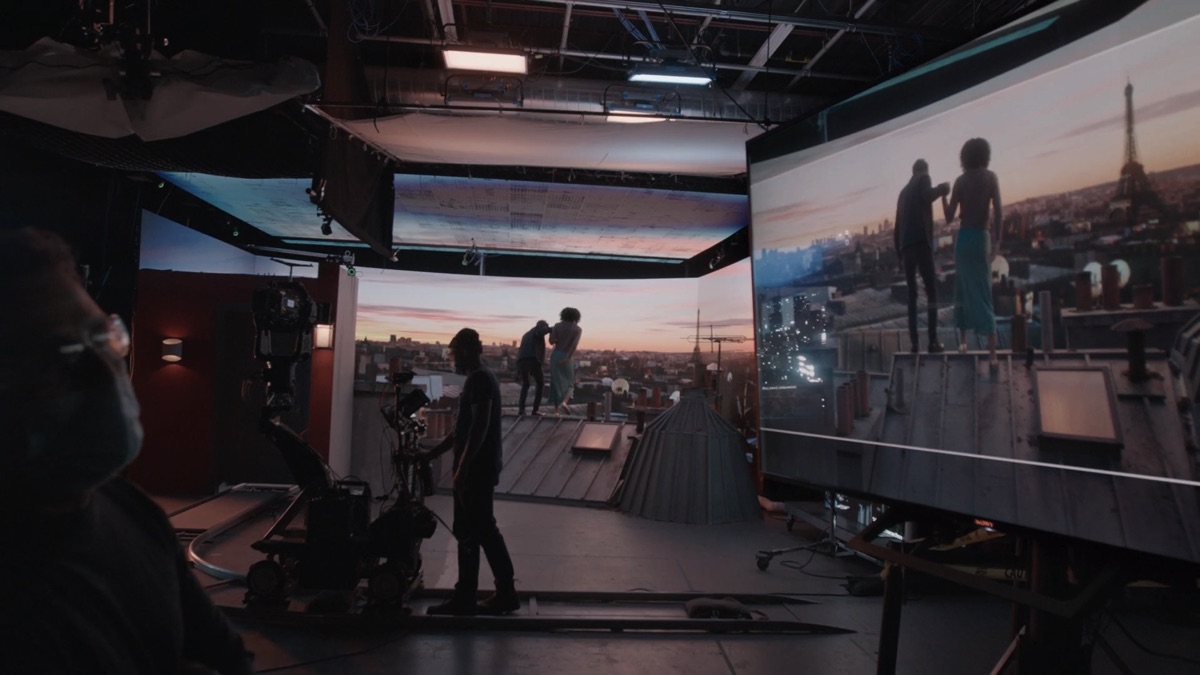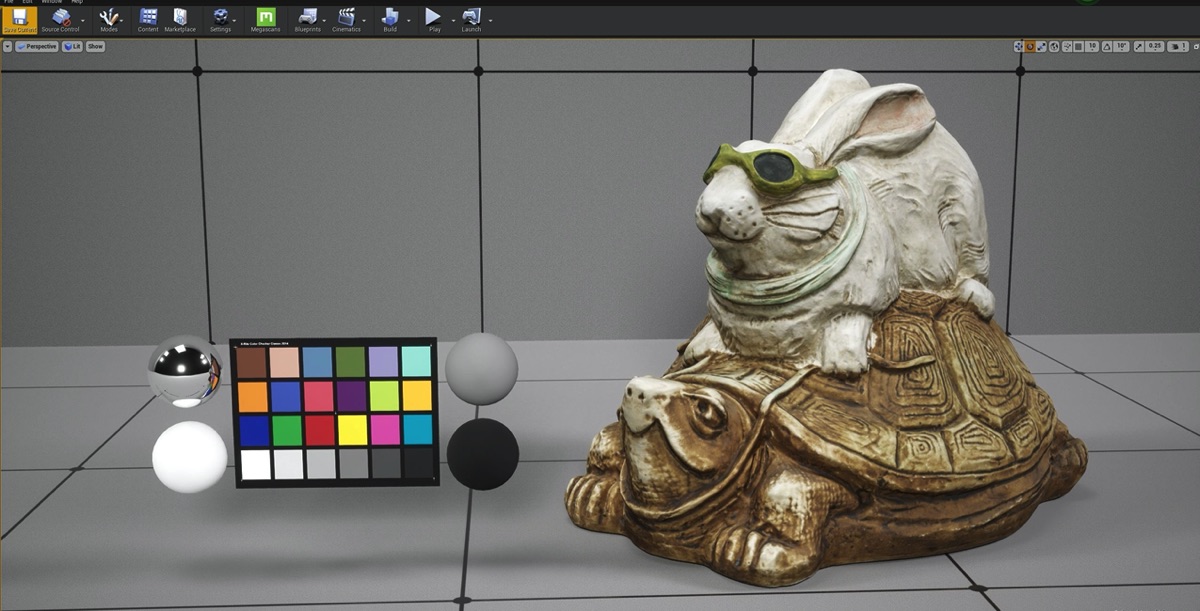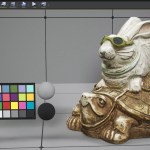MELS built one in Montreal.
You can’t escape the rise and rise of virtual production right now. Indeed, more and more virtual production set-ups are popping up all around the world.
When MELS Studios began showcasing what they have instaled at their location in Montreal for virtual production, I decided to ask president Martin Carrier what was involved from a technical and logistics perspective. Here’s what he told befores & afters.
b&a: What’s the technical setup for the virtual production studio at MELS (LED screens, cameras and camera equipment, hardware/software etc)? How did you decide on this particular setup?
Martin Carrier: The setup consists of the following (split into several groups of machines):
1. Unreal Servers for Screen output (1 server per screen + 1 master server):
Intel based server with Xeon chips running at 2.7 GHz each with 8 core
192 GB of ram
1 TB NVMe M.2 local drive
Dual 10 Gb/s Network cards
Quadro rtx 8000 Cards with 48 GB GDDR6 ram
Quadro Sync Card for system sync
2. Brain Bar:
The Brain bar consists of 4 stations each being able to connect to multiple computers (We use HMX network extenders to allow for this on a separate network)
Network setup: 3 distinct physical networks
1 for camera tracking
1 for HMX
1 for all display systems
3. For the LED wall, we used Absen 2.9 tiles and Novastar LED video display processors.
4. For the camera, we used an ARRI Alexa and we used OptiTrack as camera tracking system
b&a: What did you find were some of the challenges in getting all those different components to ‘work together’?
Martin Carrier: There are several combinations that can be pieced together for this kind of project. By definition, getting these different components to work together and providing a great end product is part of getting the magic to operate. So, the trial and error approach was challenging but also rewarding in the end. On top of things, we made it hard for ourselves as we wanted to achieve a distinctive shot that included foreground décor elements and a scenery change. Having those elements in place provided for some calibration issues that create additional but, in the end, resolvable challenges.
b&a: In test shots—and in any productions that have been through the studio—what can you say about the experience so far in what kinds of scenes can be filmed most effectively in virtual production (ie rooftop shots, car driving scenes, other things)?
Martin Carrier: After a successful experience that included an indoor shot and a rooftop shot, we can affirm that outdoor, large vista shots are particularly well suited for virtual production. Of course, there are other, very applicable instances. But in our experience so far, we have found that outdoor shots provide for great added value in the use of the dynamic lighting inherent in the presence of LED walls on a virtual production stage.
b&a: Virtual production clearly offers filmmakers the chance to provide for exotic environments in-camera without having to go to those locations (especially now during COVID). But, on the virtual production set, what are some of the precautions that continue to need to be followed?
Martin Carrier: As with all filming stages today, extensive protocols were in place to ensure a Covid-controlled environment. The same rules apply but, given that a virtual production stage is located inside a studio, it’s easier to keep track of who is on set at any given time. This helps in the application of sanitary protocols.
b&a: How do filmmakers make use of the virtual production studio—is all the equipment there ready to use? Can they bring their own setups too, or parts of their own setup?
Martin Carrier: Given the fine tuning involved in building an efficient set, it makes more sense for MELS to provide a turnkey solution. We can build to a specific size and volume, but we feel it is best to offer an integrated solution that lets filmmakers focus on the content side rather than the technical side of Virtual Production. We provide the technical and equipment knowhow and filmmakers can focus on getting great shots made.


















